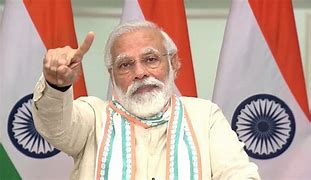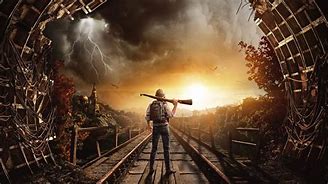Feature
Ayodhya: SC orders allotment of alternative land to Muslims for mosque

The Supreme Court on Saturday pronounced its verdict in the politically sensitive case of Ram Janmabhoomi-Babri Masjid land dispute in Ayodhya. The five-judge constitution bench headed by Chief Justice Ranjan Gogoi, includes Justices SA Bobde, DY Chandrachud, Ashok Bhushan and S Abdul Nazeer.
The Ayodhya dispute, India’s longest-running historical, political and socio-religious debate, culminated on Saturday when the country’s Supreme Court ruled on the title suit of the 2.77 acre land in this Uttar Pradesh town that is claimed both by Hindus and Muslims.
There was unprecedented security in Uttar Pradesh as well as other parts of India with Prime Minister Narendra Modi stating that the judgement would not be anyone’s ‘victory or defeat’ but ‘would give strength to India’s tradition of peace, unity and amity’.
Here are highlights from the verdict:
* Sharp at 10.30 am, the 5-judge bench assembled to read out the verdict.
* The bench dismissed the appeal of the Shia Waqf Board, pronouncing an unanimous verdict in the case. Shia Waqf board’s claim was over the disputed structure. Court says the land is held by the government, according to revenue records.
* SC said the disputed land was government land in revenue records.
* SC referred to the content of the lawsuit of devotee Gopal Singh Visharad — the first to approach court in 1950 — seeking right to worship at the site.
* Top court held that Nirmohi Akhara’s suit is barred by limitation, not a shebait or devotee of deity Ram Lalla.
* SC lent credence to the archeological evidence on the disputed site.
* SC said that terming the archeological evidence as merely an opinion would be a great disservice to the Archeological Society of India.
* The Apex court said the Babri mosque was not built on vacant land. The underlying structure was not an Islamic structure.
* Court said the fact that there lied a temple beneath the destroyed structure has been established by the ASI.
* ASI had not established whether temple was demolished to build the mosque.
* Hindus consider this place as birthplace of lord Ram, even Muslims say this about disputed place: SC
* Faith of Hindus that Lord Rama was born at demolished structure is undisputed: SC
* The existence of Sita Rasoi, Ram Chabutra and Bhandar grih are the testimony of the religious fact of the place: SC
* Title cannot be established on ground of faith, belief; they are kind of indicator for deciding dispute: SC
* Evidence suggests Hindus were in possession of outer court yard, says SC
* Extensive nature of Hindus worshipping at outer courtyard at site has been there: SC
* Evidence suggest Muslims offered Friday prayers at mosque which indicates they have not lost possession: SC
* Despite obstruction caused in offering prayers at mosque, evidence suggest that there was no abandonment: SC
* Iron railing was set up at site in 1856-1857, it suggests Hindus kept worshipping at the site: SC
* Muslims have not adduced evidence they were in exclusive possession of dispute site: SC
* Muslims were not in possession of outer courtyard of the site: SC
* UP Sunni Central Waqf Board has failed to establish its case in Ayodhya dispute: SC
* On the contrary, Hindus established their case that they were in possession of outer courtyard: SC
* SC directs allotment of alternative land — of 5 acres — to Muslims to build new mosque.
* Damage to Babri mosque was violation of law: SC
* SC asks Centre to frame scheme within 3 months and set up a trust for construction of a temple.
* SC dismisses plea of Nirmohi Akhara seeking control of entire disputed land.
* Possession of disputed 2.77 acre land will remain with central government receiver for the temple: SC
* Centre, UP govt can monitor together future actions by authorities: SC
* SC grants entire 2.77 acre of disputed land in Ayodhya to deity Ram Lalla.
* SC directs Centre and UP govt to allot 5 acre land to the Muslims at a prominent place for building mosque.
* SC asks Centre to consider granting some kind of representation to Nirmohi Akhara in setting up of trust.
Entertainment
Meghalaya Reserves Legalized Gambling and Sports Betting for Tourists

The State Scores Extra High on Gaming-Friendly Industry Index
Meghalaya scored 92.85 out of 100 possible points in a Gaming Industry Index and proved to be India’s most gaming-friendly state following its recent profound legislation changes over the field allowing land-based and online gaming, including games of chance, under a licensing regime.
The index by the UK India Business Council (UKIBC) uses a scale of 0 to 100 to measure the level of legalisation on gambling and betting achieved by a state based on the scores over a set of seven different games – lottery, horse racing, betting on sports, poker, rummy, casino and fantasy sports
Starting from February last year, Meghalaya became the third state in India’s northeast to legalise gambling and betting after Sikkim and Nagaland. After consultations with the UKIBC, the state proceeded with the adoption of the Meghalaya Regulation of Gaming Act, 2021 and the nullification of the Meghalaya Prevention of Gambling Act, 1970. Subsequently in December, the Meghalaya Regulation of Gaming Rules, 2021 were notified and came into force.
All for the Tourists
The move to legalise and license various forms of offline and online betting and gambling in Meghalaya is aimed at boosting tourism and creating jobs, and altogether raising taxation revenues for the northeastern state. At the same time, the opportunities to bet and gamble legally will be reserved only for tourists and visitors.
“We came out with a Gaming Act and subsequently framed the Regulation of Gaming Rules, 2021. The government will accordingly issue licenses to operate games of skill and chance, both online and offline,” said James P. K. Sangma, Meghalaya State Law and Taxation Minister speaking in the capital city of Shillong. “But the legalized gambling and gaming will only be for tourists and not residents of Meghalaya,” he continued.
To be allowed to play, tourists and people visiting the state for work or business purposes will have to prove their non-resident status by presenting appropriate documents, in a process similar to a bank KYC (Know Your Customer) procedure.
Meghalaya Reaches Out to a Vast Market
With 140 millions of people in India estimated to bet regularly on sports, and a total of 370 million desi bettors around prominent sporting events, as per data from one of the latest reports by Esse N Videri, Meghalaya is set to reach out and take a piece of a vast market.
Estimates on the financial value of India’s sports betting market, combined across all types of offline channels and online sports and cricket predictions and betting platforms, speak about amounts between $130 and $150 billion (roughly between ₹9.7 and ₹11.5 lakh crore).
Andhra Pradesh, Telangana and Delhi are shown to deliver the highest number of bettors and Meghalaya can count on substantial tourists flow from their betting circles. The sports betting communities of Karnataka, Maharashtra, Uttar Pradesh and Haryana are also not to be underestimated.
Among the sports, cricket is most popular, registering 68 percent of the total bet count analyzed by Esse N Videri. Football takes second position with 11 percent of the bets, followed by betting on FIFA at 7 percent and on eCricket at 5 percent. The last position in the Top 5 of popular sports for betting in India is taken by tennis with 3 percent of the bet count.
Local Citizens will Still have Their Teer Betting
Meghalaya residents will still be permitted to participate in teer betting over arrow-shooting results. Teer is a traditional method of gambling, somewhat similar to a lottery draw, and held under the rules of the Meghalaya Regulation of the Game of Arrow Shooting and the Sale of Teer Tickets Act, 2018.
Teer includes bettors wagering on the number of arrows that reach the target which is placed about 50 meters away from a team of 20 archers positioned in a semicircle.
The archers shoot volleys of arrows at the target for ten minutes, and players place their bets choosing a number between 0 and 99 trying to guess the last two digits of the number of arrows that successfully pierce the target.
If, for example, the number of hits is 256, anyone who has bet on 56 wins an amount eight times bigger than their wager.























